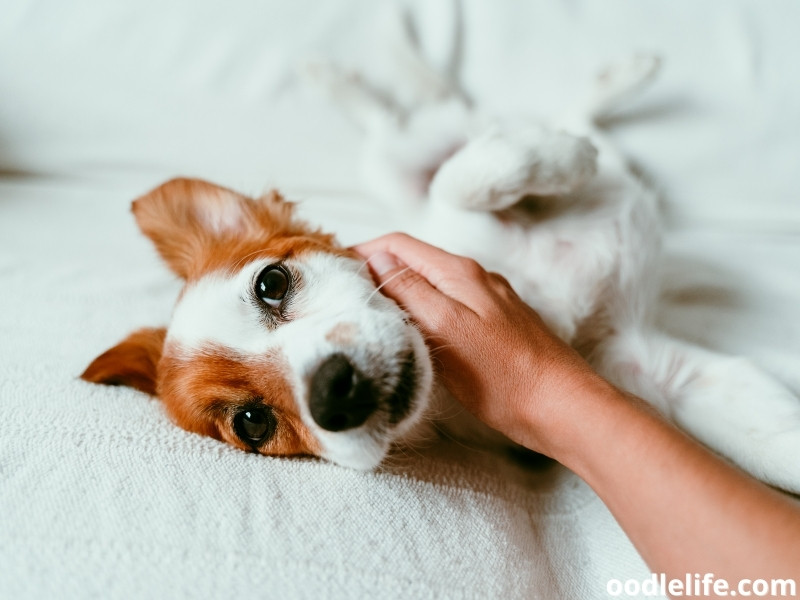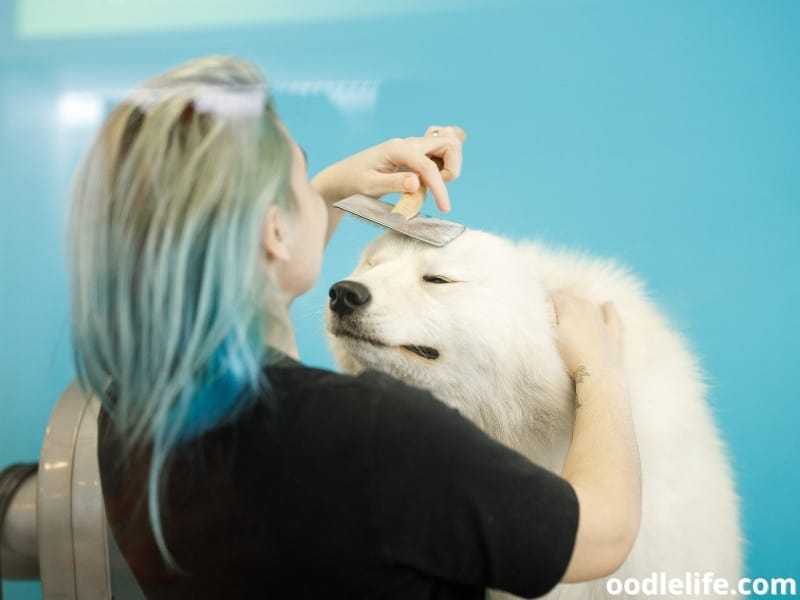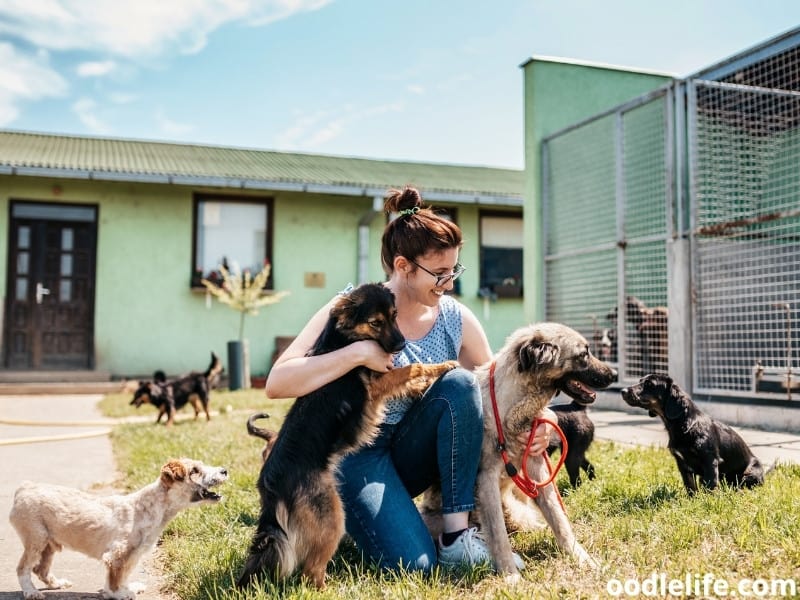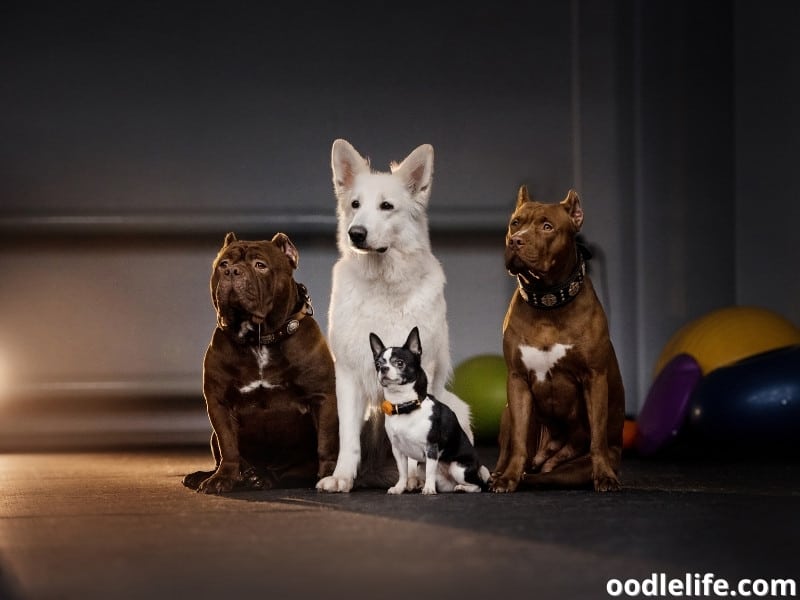How To Tell If A Dog Has A Double Coat?
You can usually determine if a dog has a double or single coat simply by looking at it. The distinction is noticeable, particularly when looking at dogs with thick, fluffy coats like Spitz-type dogs and other varieties.

However, looks can be deceiving, and a Maltese for example, is a great big fluff ball that also sheds very little, and Yorkshire Terriers have long, flowing hair that can reach to the ground, but they too, are hypoallergenic.
If you can’t tell whether a dog’s coat is a single or double, here are a few more things you can do
The easiest way to distinguish different coat types is with your hands or a brush. Use your hands and stroke the dog upwards, from its hindquarters to the head. If you see a thicker, coarser coat on the exterior and a softer coat below, you have a double-coated dog.

Another approach is to brush and compare your dog’s hair. Brush its hair thoroughly, then remove the hair from the brush to observe the texture. If you see two types of hair, one harsher and one softer, your dog is double-coated.
On the flip side, the hair of a single-coated dog has all the same texture.
If the dog is a pure breed, you can research the breed. Some breeds are known to be heavy sheddings, while others can be light ones. Generally speaking, breeds that are from cold climates are double-coated while those from warmer ones are single.

Popular double-coated breeds are:
Popular single-coated breeds include:
If your dog is a mixed breed, you can try to figure out who the parent breeds are, or get a DNA test done. A pup from two high-shedding parents will be the same, and vice versa. However, with mixed breeds, it is significantly more difficult to predict their coat type and looks, as it will depend on which parent it takes after.
Why Do You Need To Know Their Coat Type?
When it comes to giving your beloved buddy the greatest grooming care for a healthy lifestyle, it’s crucial to understand the various dog coat types. Some pooches have wavy hair; others have fur that is thick or grows all the way to the floor.

When grooming, the type of coat your dog has will determine several things you’ll need like the brush, the shampoo, the need for a conditioner, and an undercoat rake, which is a special type of brush for an undercoat.
For an easier clean, different dog coat types call for different solutions. Knowing your dog’s coat type as a dog owner can make you a better at-home groomer, since it’s your responsibility to wash and scent your dog’s coat.
In addition, people with allergies might have to avoid double-coated dogs that shed heavily, especially in the spring and fall. Not only will they trigger allergies, but they may also cause a more severe allergic reaction due to their thick coats picking up a greater number of allergens like pollen and dander.
While not all single-coated dogs are hypoallergenic, there are several dogs that are categorized as such. Hypoallergenic dogs are basically any breed of dog that is less likely to cause an allergic reaction in people. This can be due to the dog’s fur, skin, or even saliva.
Some of the most popular hypoallergenic dog breeds include the Yorkshire Terrier, Bichon Frise, Maltese, and Poodle.
If you suffer from allergies, a single-coated hypoallergenic dog is a great choice because you’re less likely to have a reaction to them. Also, hypoallergenic dogs are an excellent choice for people who don’t want to deal with a great deal of doggy fur around the house.
How Do You Strip a Dog’s Coat?
If you’ve never hand-stripped your wire coated dog’s hair, first ask a pet groomer to do it for you, and watch and learn. When you’re ready to try it at home, commandeer the help of another person, situate your dog comfortably on a sturdy surface, and then ask your helper to hold him. Grasping a few strands of hair between your thumb and forefinger, gently pull and remove them. Apply slight pressure to your dog’s skin as you work, and pull the hair with and not against the direction it grows. NOTE: Remove the hair only if it comes out without resistance. If it does not, it isn’t ready to be stripped. Some wire coats require only seasonal stripping, and some more frequent stripping. But you don’t need to strip the entire coat in one session—addressing his coat a section at a time, over a period of days or even weeks, will work fine for most wire coated dogs.
PUPPY UPDATE! What is a double coat? And Reina the clever girl! | Sweetie Pie Pets by Kelly Swift
From the neat, flat coat of the Labrador Retriever to the abundant shaggy mop of the Old English Sheepdog, a dog’s coat type is one of his most distinguishing features. Dog coat type refers to the differences in texture and length of the fur, and whether it’s a double or single coat. Varied coat types require different methods of grooming and present different challenges (especially for first-time owners), and also influence your best friend’s need for a dog jacket in crisp weather. Here’s the long and the short—and the rough and the smooth—of it:
If you want to be technically correct (…and people who like being technically correct would say that’s the best kind of correct), ‘hair’ and ‘fur’ are the same things. If you looked at them under a microscope, or analyzed them chemically, you’d find no difference.
Then what do people mean by dogs with hair versus dogs with fur? They’re usually referring to the difference between a single coat and a double coat. A single layer of coat is sometimes called a ‘hair’ coat. It might grow long or stay short, cascade in waves or form bouncy curls, feel silky smooth or rough to the touch, but the hair all over the dog is basically the same.
Other dogs have a double coat: an outer layer of thicker guard hairs and a different undercoat of thin, lightweight hairs. The undercoat is like the down on some birds that grows beneath the larger, thicker, more weatherproof feathers.